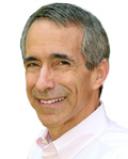

It's time to give intelligent rest a chance.
People who are supremely creative creatively use rest. Look at Darwin, Einstein, and G.H. Hardy. Some of the greatest geniuses “worked” only four hours a day. They rested in-between bouts of creative transformation, generally operating in 90-120 minute bursts. Implicitly they recognized what science now demonstrates—that the body as information system always rebuilds and renews. Human "downtime” is not like the "rest" of a car or a computer. In human downtime, the body is continually learning, especially when asleep. Rest is not only necessary for life and survival, but for the creative capacities that will power knowledge industries of the future. And human creative capacities follow inherent biological capacities. They include our inner body clocks, with their multiple rhythms, and our need to recharge.
Biological intelligence can do more than make individuals smarter; it can enhance the performance of communities and societies.
Rest For Success
A widely reprinted article by Alex Soojung-Kim Pang looks at geniuses and non-geniuses creating new work and new ways to interpret old creative work, as when performing classical music. Darwin split his day into morning and evening work, doing about four hours total. G.H. Hardy, one of the greatest mathematicians of the twentieth century and author of a celebrated autobiography, worked in a four hour stint in the morning, but with breaks. The great novelist Anthony Trollope wrote his 2500 words a day between 5:30 and 8:30 a.m. before rushing off to help run the British Postal Service; to him we also owe a version of the post box. Another great mathematician-physicist, Henri Poincare, as famous today as his presidential cousin Rene, made fundamental contributions to mathematics and relativistic physics while working as Chief Engineer for the French National Corps des Mines.
Poincare's working style is particularly instructive. Creative work was set for 10-12 a.m. and 5-7 p.m. These are times of highest alertness decreed by human biological clocks. Early evening is also the best time for greatest long term memory, and hitting new Olympic and other athletic records.
Fortunately genius doesn’t just involve the brain.
Different Kinds of Knowledge
Bodies are taught as importantly and impressively as the brain. They should—body and brain represent a unitary information system. Pang writes eloquently of Ericsson's, Krampe's, and Tesch-Romer’s study of Berlin violin students in the 1980s. The most successful students napped more. Slept longer. Worked away at “deliberate practice”—intense sessions of 80-90 minutes separated by well planned rest periods in between.
The period 90 minutes shows up again and again in human research. It’s not just the length of soccer games or many commercial movies. Sleep operates in 90 minute cycles between sleep stages. Many industrial consultants note that for varying types of work, productivity often taps out at about 90 minutes.
The study of violin students demonstrates that muscles learn, as do brains. They also perform better with periods of intense activity followed by rest—including the High Intensity Interval Training movement, or HIIT.
People cannot sprint at top speed for 90 minutes. But if they do sprint, bike, or lift weights at peak performance for short intervals, such “high intensity” events not only lead to better overall performance but improved insulin sensitivity and, according to recent research, improved overall health.
Rest is required for these benefits to be acquired. Walking 10 minutes at three widely separated times of day will do better than walking once for 30 minutes if BP is the variable looked at. In this way, intense athletic activity shows many similarities to intense creative brain work. Both require rest for the advantages to remain and continue—for the learning and regrowth to get "locked in."
Principles of Rest And Creativity
From these studies and others, certain ideas are becoming more current:
1. Human creative activity, whether related to “brain” or “brawn,” is limited by fatigue that is biologically limited. Pang notes varied studies where the most productive scientists worked the least hours at “creative” work—10-20 hours a week.
2. Rest periods are required for the gains of intense activity to be recorded and maintained. Sleep is a special kind of rest where muscle and mental memory are sifted, refined, and recreated.
3. Ninety minutes appears to be a particular cycle for human creativity and productivity.
4. Much of “ordinary” work, like Poincare’s rebuilding of the French train system, can be accomplished during “downtime” from more intensely creative work.
5. Age sets different capacities for different kinds of creative work. Athletes and mathematicians need the agility and combinatorial chemistry of youth for certain kinds of achievments, while experience can lead to different kinds of powerful aesthetic and social creativity in later years.
6. Like aging, biological clocks privilege different kinds of creativity. Many writers and mathematicians describe their best work as occurring during morning hours, with major exceptions for night owls.
How This All Works
The future appears to be dominated by knowledge industries. Creativity is critical for their success. To achieve maximal human creativity, the common conceptualization of the human body as a machine must be ditched.
Humans are not machines. Computers don’t care if it’s 4 a.m. or 4 p.m., and generally don’t care if they’ve been working ten minutes or ten days. Getting scientists or coders to crank out endless hours on a time clock will most effectively lead to fatigue, poor performance, and burnout. Silicon Valley usually recognizes this principle, but in the brutal hunt for who completes projects the quickest, often forgets it, too.
And what most of industry fundamentally fails to recognize is how the regenerating information system that is the human body really works: that it often does best with intense activity followed by equally “intense” rest. For the body is always active, always learning. The “eureka” moment of genius often follows weeks or years of unconscious activity. Just because we don’t see thought happening does not mean we stop thinking and learning. We think while asleep. We think while idling in traffic. Parts of our brains are thinking and learning while filling out senseless forms. Our brains and bodies are rebuilding themselves every second we’re alive, “acting” while we rest. Every moment is a teaching moment to the body.
But can we learn to learn and create more intelligently? Or will we continue to treat ourselves like machines, forgetting about biological clocks, timing, limits of human capacity, the necessity of rest and play?
If we want individually and collectively to succeed, it’s time to recognize how biological intelligence works. You’re always training your brain and body. Every part of you will work better if you know how to use your own biological intelligence.



